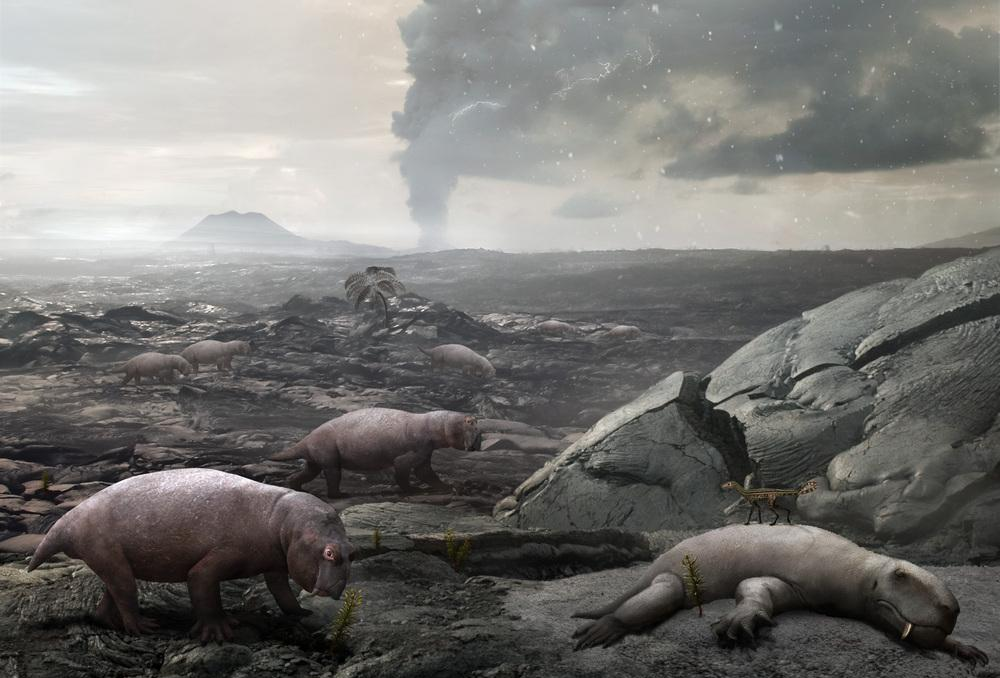252 million years ago, the Earth was vastly different. Before the dinosaurs, prehistoric creatures roamed the landscape. But suddenly, in just a few thousand years, 90% of all life on Earth….disappears. This event is known as the Permian Extinction, or the Great Dying. What caused this disastrous mass extinction, and should we be concerned for our future on this planet?
2024 is an El Niño year. It is a phenomenon that changes climates across the globe, resulting in more extreme weather than usual, and often causing natural disasters such as landslides, floods, and droughts.
The Great Dying, was a catastrophic event that happened between the Permian and Triassic periods, just before the rise of the dinosaurs. During this time, 90% of all lizards, sea creatures, and plants vanished, erased from the face of the Earth for several million years.
Recent studies show that the El Niño may have a connection to the Great Dying. An El Niño year typically occurs every three to ten years and lasts anywhere between nine to twelve months. However, to wipe away almost all the life on our planet, this couldn’t have been any ordinary El Niño. “If the conditions were bad but constant, life could have evolved to cope with it. But the fact is, it kept lurching from one extreme to the other over the decades,” Paul Wignall, a professor of paleoenvironments at the University of Leeds in the United Kingdom, told CNN.
“In regular years, winds go in a certain direction, pushing ocean currents in a certain direction and typically, the weather in those areas are consistent, because if warm water is going through the area that’s gonna add energy to the air, and if there’s a lot of energy in the air, then you have more precipitation, more weather events,” said Mr. Lui, a 6th grade science teacher at Fallon Middle school who teaches about El Niño.
When El Niño occurs, the wind patterns around the globe reverse. This means that the ocean currents also reverse, causing warm water to pass to different areas. Mr. Lui, a 6th grade science teacher, explained, “If the water’s going the opposite direction, that’s gonna cause a difference in weather and climate.”
250 million years ago, the Earth was unrecognizable. There was only one land mass, a supercontinent called Pangea, and only one sea, the Panthalassic ocean. This may have affected how vulnerable the Earth was to something like this. But as for modern times, experts believe that the planet will not reach a disaster like this anytime in the future.
Paul Wignall said to CNN, “The end-Permian is the biggest crisis in Earth’s history from life’s standpoint, but I don’t think we’ll ever get anywhere near those conditions again, because (Earth back then) was a really strange planet with a continent on one side and gigantic ocean on the other.”
On the contrary, the climate is getting warmer at an increasing rate as greenhouse gases get pumped into the atmosphere and many do not think humanity will be ready for a possible catastrophic event to happen. “If an extinction, or something, [or] we got a warning that things were going to happen or things were going to get really hot, I don’t think we would have the resources to survive something that [was] as severe as what happened in the Permian Period,” said Mr. Lui. He then added, “I think the data is pretty obvious in the last hundreds of years, since 18 whatever, since the industrial revolution, humans, we have accelerated the amount of greenhouse gases in the atmosphere.” The Earth is different from the time of the Great Dying, yet it is evident that we are still vulnerable to disasters. But for now, we can only be wary of the possibilities.
























Leyna van Westerlaak • Dec 16, 2024 at 10:45 pm
Simply AWESOME. A must read. A ton of info and excellent choice to interview.